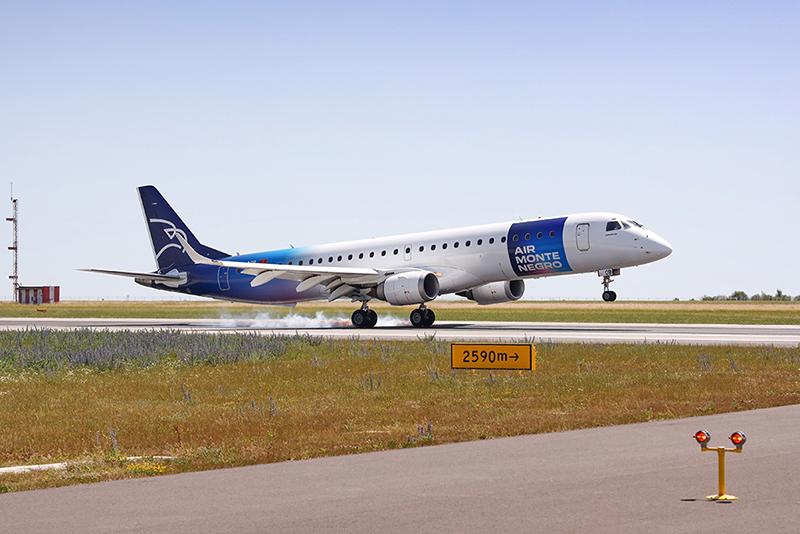
Since becoming independent following the break-up of the former Yugoslavia, the small Balkan state of Montenegro has established itself as a popular summer holiday destination for Europeans. Good for the country’s economy, but a problem for the national carrier, which has to cope with the resulting peaks and troughs of seasonality.
That seasonality was one reason behind the decision to opt for initial equipment of Embraer crossover jets rather than the more normal equipment choice for small European national carriers of Airbus A320s or Boeing 737s.
“The difference in demand between the winter and summer seasons is significant,” spokeswoman Maja Bjelić said.
“Therefore, due to both the expertise of the staff” – the airline’s predecessor was also an Embraer operator – “and the seasonality of the country, the ideal solution for the establishment of the company was the Embraer-type aircraft.
“For the needs of the winter season, A320 or Boeing 737 aircraft would be too large, while the same type would meet the requirements during the summer season.” To cope with the summer peak, Air Montenegro leases in an A320, but a pair of Embraer 195s – with a third 195 or 190 scheduled to be introduced shortly – is adequate to cope with the reduced loads encountered in winter.
The emphasis on holiday and leisure traffic can be seen from the fact that only around 10% of Air Montenegro’s passengers are business travelers, Bjelić said.
The company aims to address its fluctuating traffic figures “by maintaining as many profitable routes as possible during the winter and introducing new ones. In December this winter, we introduced the Podgorica-Rome route, ensuring Montenegro remains connected to the Italian market not only during the summer season.”
The airline collaborates with the country’s national tourism organization to promote Montenegro as a year-round destination.
By bolstering the timetable in this way over the winter months, Air Montenegro not only contributes to the extension of the tourism season, but demonstrates the significance of having a national airline, where national interest takes precedence over profitability, said Bjelić.
When the Embraers are eventually retired, Air Montenegro will consider either E2 versions or Airbus A220s as replacements. “However, everything is up to the market situation.”





